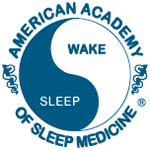 You can find out a lot about a person’s health just by taking a hair sample. Employers and police use hair tests to detect traces of alcohol, cocaine, marijuana, meth and many more oft-abused substances. Your doctor can tell you if you have any vitamin, mineral or nutritional deficiencies from a few dozen strands. And now researchers are learning hair tests can show when we are supposed to sleep and whether our body clocks are off track.
You can find out a lot about a person’s health just by taking a hair sample. Employers and police use hair tests to detect traces of alcohol, cocaine, marijuana, meth and many more oft-abused substances. Your doctor can tell you if you have any vitamin, mineral or nutritional deficiencies from a few dozen strands. And now researchers are learning hair tests can show when we are supposed to sleep and whether our body clocks are off track.Findings published in the Proceedings of the National Academy of Sciences suggest hair sample testing may help specialists in sleep medicine diagnose circadian rhythm disorders. Hair follicle cells from the head or chin hair contain clock gene expressions. In other words, the amount of the genetic material RNA in your hair shows whether you’re supposed to be alert. Your hair has the most RNA during peak hours.
The Japanese authors repeatedly took hair samples from volunteers as they continued their daily routines. Over the course of three weeks they adjusted their schedule by four hours. Hair samples show their peak activity was still about two hours off, meaning their body clocks weren’t adjusted to the new sleep schedule.
The effect was magnified for rotating shift workers. Their body clock differed from their sleep-wake schedule by an average of five hours.
Beard hair worked best for the tests: researchers needed only three strands to detect circadian rhythms. It took about five head hairs for people with thick hair and up to 20 for thin head hair.
The technique is still in its infancy but has potential for clinical use, the authors argue. Hair samples could potentially tell us our chronotype and diagnose circadian rhythm disorder, jet lag and shift work disorder.
Read more about chronotypes and shift work on the Sleep Education Blog.
Image by Sciencehealth







No comments:
Post a Comment